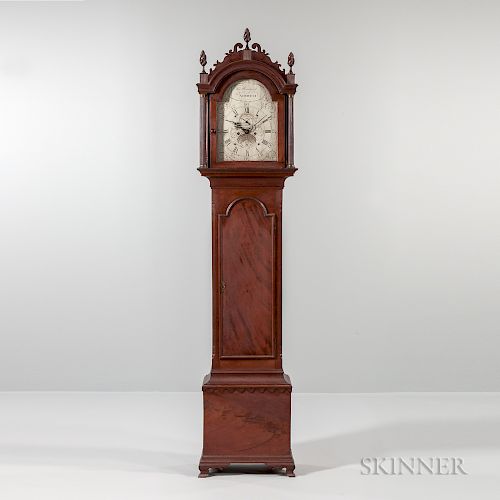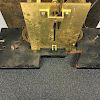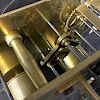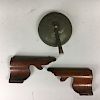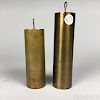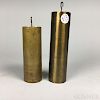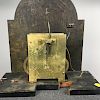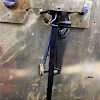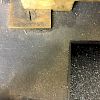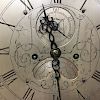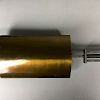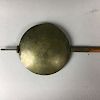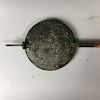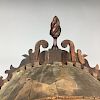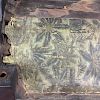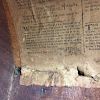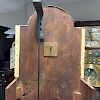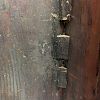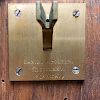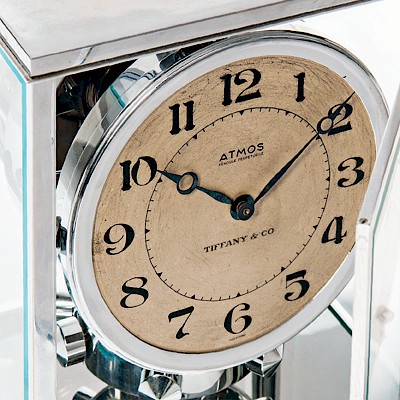Thomas Harland Figured Mahogany Tall Clock
Lot 187
About Seller
Bonhams Skinner
274 Cedar Hill Street
Marlborough, MA 01752
United States
Founded over four decades ago, Bonhams Skinner offers more than 60 auctions annually. Bonhams Skinner auctions reach an international audience and showcase the unique, rare, and beautiful in dozens of categories, including the fine and decorative arts, jewelry, modern design, musical instruments, sc...Read more
Estimate:
$15,000 - $25,000
Absentee vs Live bid
Two ways to bid:
- Leave a max absentee bid and the platform will bid on your behalf up to your maximum bid during the live auction.
- Bid live during the auction and your bids will be submitted real-time to the auctioneer.
Bid Increments
| Price | Bid Increment |
|---|---|
| $0 | $10 |
| $100 | $25 |
| $500 | $50 |
| $1,000 | $100 |
| $3,000 | $250 |
| $5,000 | $500 |
| $10,000 | $1,000 |
| $30,000 | $2,500 |
| $50,000 | $5,000 |
| $100,000 | $10,000 |
| $300,000 | $25,000 |
| $500,000 | $50,000 |
| $1,000,000 | $100,000 |
About Auction
By Bonhams Skinner
Oct 5, 2018
Set Reminder
2018-10-05 10:00:00
2018-10-05 10:00:00
America/New_York
Bidsquare
Bidsquare : Clocks, Watches & Scientific Instruments
https://www.bidsquare.com/auctions/skinner/clocks-watches-scientific-instruments-3483
Our October auction will include a 1780s T. Harland mahogany tall clock; a strong selection of vintage wristwatches, an array of fountain pens and marine and scientific instruments; antique automobiles; and aviation models from The Collection of Frederic and Jean Sharf. Bonhams Skinner bidsquare@bonhamsskinner.com
Our October auction will include a 1780s T. Harland mahogany tall clock; a strong selection of vintage wristwatches, an array of fountain pens and marine and scientific instruments; antique automobiles; and aviation models from The Collection of Frederic and Jean Sharf. Bonhams Skinner bidsquare@bonhamsskinner.com
- Lot Description
Thomas Harland Figured Mahogany Tall Clock, Norwich, Connecticut, c. 1780, flame-turned finials atop the scalloped-top hood with freestanding fluted and turned quarter-columns flanking the silvered roman and arabic numeral sheet brass dial with engraved bellflowers and swags, name boss in arch reading "Thos. Harland/Norwich," with separate engraved seconds and calendar apertures, tombstone-shaped flame veneered waist door above the cyma-shaped mid-molding and carved bracket feet, eight-day, dead-beat escapement, hour-strike movement with "D.P Potter" marked cleat, regulated by a converted "Upgraded" grid iron pendulum with a brass-cased lead bob engraved on bottom "Ball 14 lbs/1880/Refinished Nov. 1880," and two brass-cased weights, ht. 90 in.
Literature: Similar dial and case examples are found in Connecticut Clockmakers of the Eighteenth Century, by Penrose R. Hoopes.
Note: Thomas Harland (1735-1807) learned the clockmaking trade in Britain before coming to America in 1773. He advertised in Norwich, Connecticut, shortly after his arrival and set up a shop, eventually employing 10-12 journeymen and numerous apprentices, including Daniel Burnap, Seril and Ezra Dodge, Jedidiah and Jabez Baldwin, Nathaniel Shipman and others. Watches are extant with his name but are likely English imports. He advertised in 1800, ".spring and plain 8-day clocks with enameled and silvered faces, completely finished and regulated in cherry and mahogany cases." Many of Connecticut's finest clocks stem from the Harland dynasty. (Thomas & Sonya Spittler and Chris H. Bailey, Clockmakers and Watchmakers of America by Name and Place, NAWCC, 2011, second edition, p. 181).
Of the known surviving Harland clocks, there is one at the Connecticut Historical Society, two at the American Clock and Watch Museum in Bristol, Connecticut, and Harland's own family clock at the Wadsworth Atheneum in Hartford.
There is dated 1785 woven newspaper from the Norwich Packet, established October 7, 1773, by Alexander Robertson, James Robertson, and John Trumbull, laid down on the underside of the hood.
Estimate $15,000-25,000
Original fret (needs to be reglued,) original feet (rear carved side bracket feet need to be reglued,) seating board with cut-out to accept the new iron gong, original bell needs to be reattached, original turned finials, possibly original wooden rod brass-faced pendulum accompanies the clock, Potter upgrades, including grid iron pendulum, black interior stain to original chestnut backboard, strike mechanism during the late 19th century are reversible.
The absence of a condition statement does not imply that the lot is in perfect condition or completely free from wear and tear, imperfections or the effects of aging. Condition requests can be obtained via email (lot inquiry button) or by telephone to the appropriate gallery location (Boston/617.350.5400 or Marlborough/508.970.3000). Any condition statement given, as a courtesy to a client, is only an opinion and should not be treated as a statement of fact. Skinner Inc. shall have no responsibility for any error or omission. - Shipping Info
-
Please visit http://www.skinnerinc.com/services/payment-and-shipping/ for information regarding the collection of items purchased at auction.
-
- Buyer's Premium



 EUR
EUR CAD
CAD AUD
AUD GBP
GBP MXN
MXN HKD
HKD CNY
CNY MYR
MYR SEK
SEK SGD
SGD CHF
CHF THB
THB